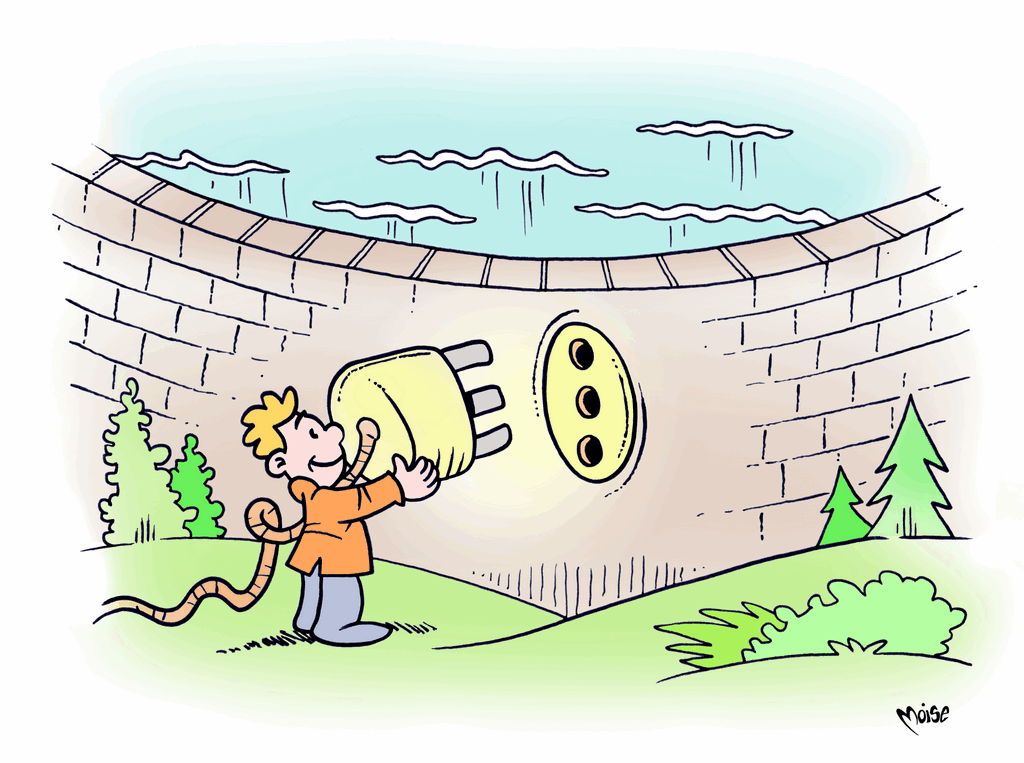
Hydroelectricity
 Ancient civilisations already used water power to produce kinetic energy for irrigation and to grind grain and, as applications and technologies evolved over time, hydraulic energy began to be used for factories, such as tanneries, sawmills, spinning mills and blast furnaces etc. However, it was only towards the end of the 19th century that people began to use the force of water to produce electricity, with the evolution of the hydraulic wheel in a turbine. Thus, a machine was created, composed of a bladed wheel fixed with a pin to its axis, which, with the technological innovations, was rendered increasingly more efficient and functional.
There are two types of hydroelectric plants:
Ancient civilisations already used water power to produce kinetic energy for irrigation and to grind grain and, as applications and technologies evolved over time, hydraulic energy began to be used for factories, such as tanneries, sawmills, spinning mills and blast furnaces etc. However, it was only towards the end of the 19th century that people began to use the force of water to produce electricity, with the evolution of the hydraulic wheel in a turbine. Thus, a machine was created, composed of a bladed wheel fixed with a pin to its axis, which, with the technological innovations, was rendered increasingly more efficient and functional.
There are two types of hydroelectric plants:
- Reservoir/basin plants which exploit the flow of water contained in an artificial reservoir created by building a dam across a water course. The water collected in the reservoir is made to flow downstream, through penstocks, to the power station, where the force of the water puts a hydraulic turbine into action, which, connected to an alternator, transforms the kinetic energy into electricity.
- Run-of-the-river stations constructed along water courses where the gradient is low but the flow is considerable and large masses of water can move the turbines.



